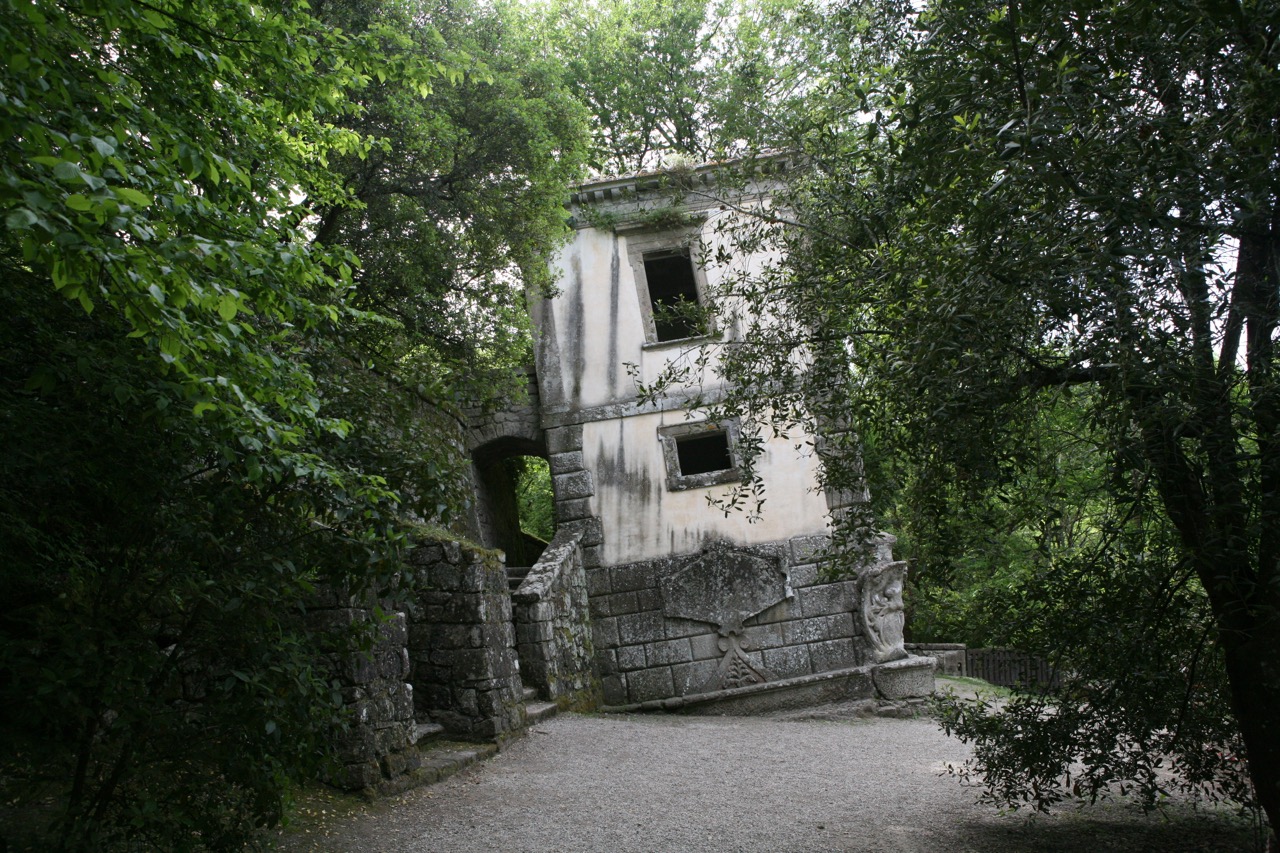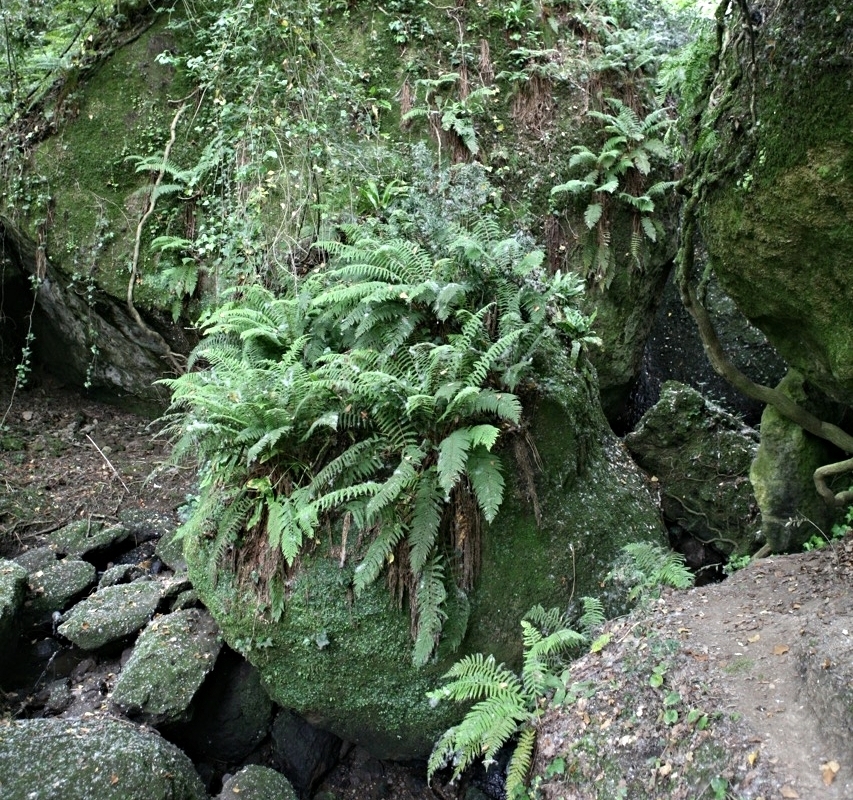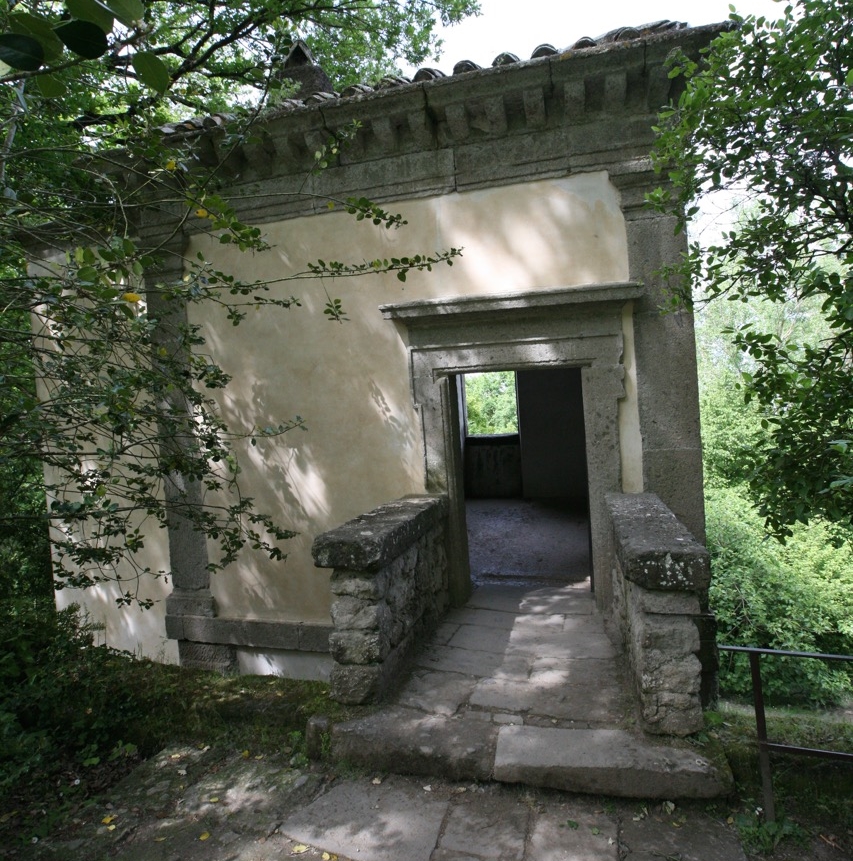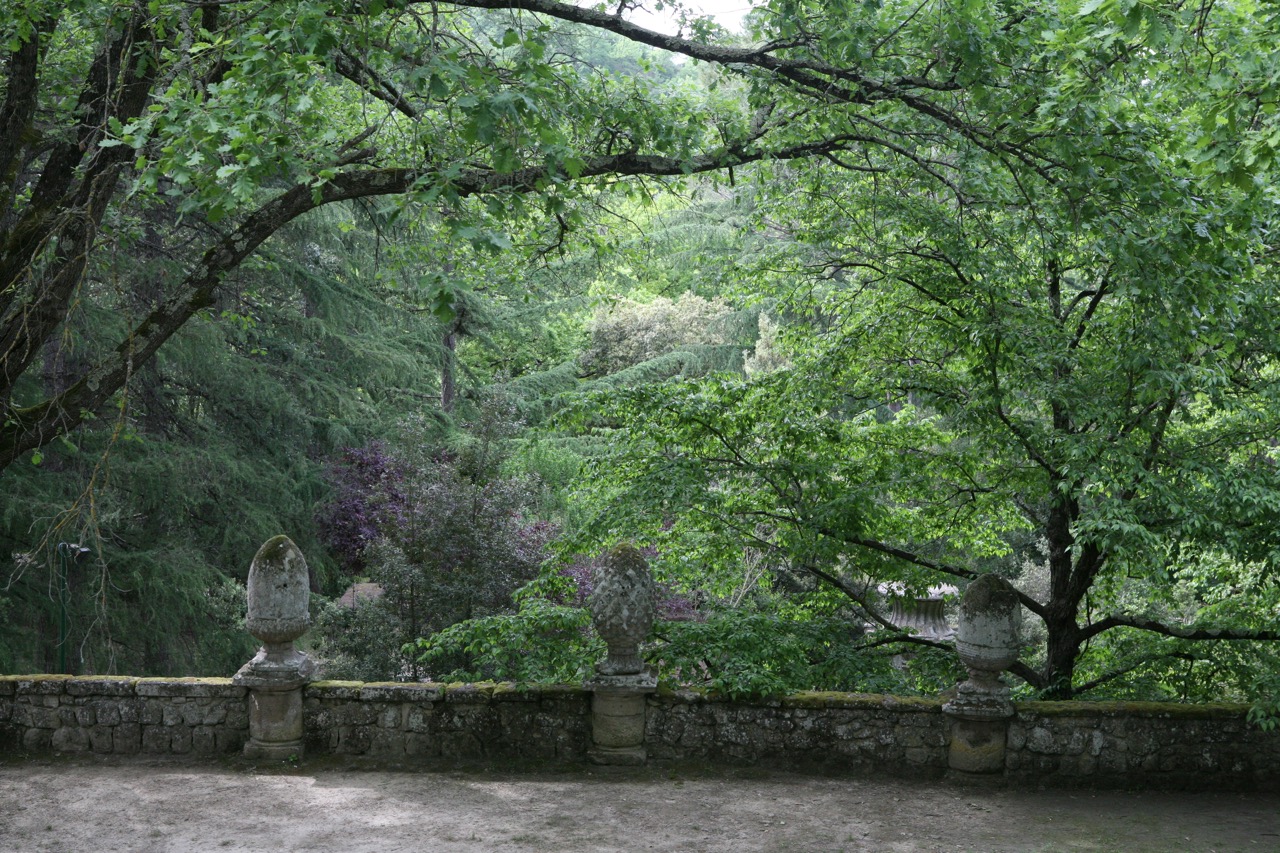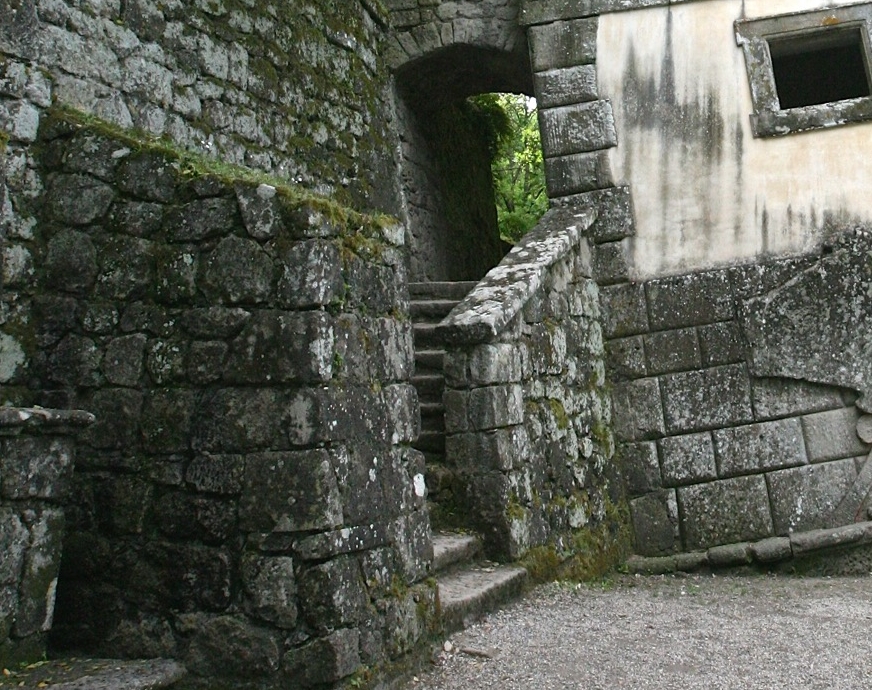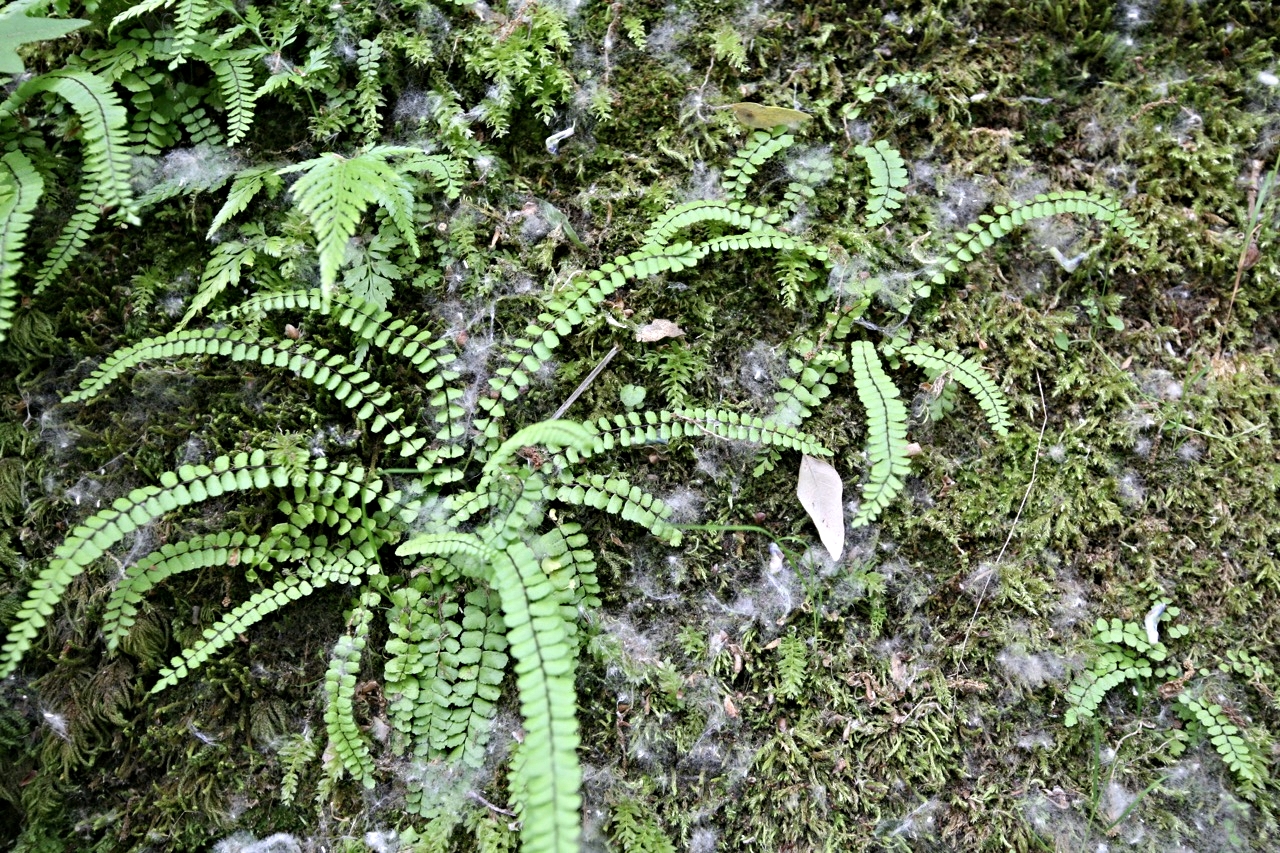No garden conjures the spirit of Halloween better than Vicino Orsini’s Sacro Bosco. Dedicated to the passing of his beloved wife Guilia, this garden has many references to death and the afterlife. At the same time, the space is full of fantasy and imagination. And it has a sense of playfulness to it.
One of the only structures not appearing to be falling into ruin is the chapel dedicated to Orsini's wife Guilia. It sits in a clearing at the top of the garden.
In prior posts we visited this garden to see Hercules tearing Cacus apart, and Orcus, god of the underworld.
On this visit I’d like to explore another aspect of this garden - the collapsing villa. It is one of several structures that appears to be falling down, melting back into the earth, or falling to pieces.
Taken literally, the crumbling structure has a fun house quality to it. It emerges out of the woods and is dangerously leaning to one side, about to fall over at any moment. Upon closer inspection a hillside keeps it propped up. This feature provides an important passage to the upper terrace via a set of stone steps. It is a blast to enter the rooms and to walk around, letting the shift in perspective play with your mind. Doing so is not for those who easily get dizzy or seasick.
More than other garden follies, its uniqueness begs the question ‘what does it mean?’ Some scholar’s read it as a comment on Orsini’s perception of the moral corruption of society, or that he wanted to be contrarian to the slavish formality used in garden design at the time.
But this garden’s creator had just lost his adored wife. So for him this structure could easily have been a metaphor for grief. Perhaps it represents the feeling that comes from losing one’s life partner; from a deep sense that one’s home-world has come undone.
Sacro Bosco, known locally as Parco dei Mostri, was built in the 1550’s. Orsini hired landscape architect Pirro Ligorio and sculptor Simone Moschino. They worked on the garden for over 20 years. After Orsini’s death, the garden was forgotten and fell into disrepair. In 1949, artist Salvador Dali and art critic Mario Praz rediscovered it. A short film shows Dali exploring the garden. In 1950, Giovanni Bettini purchased and restored the garden. His family continues to keep it open to the public.
When you visit Sacro Bosco, plan for an hour’s drive from Rome, or about 15 minutes outside of the town of Bomarzo.
The map of Sacro Bosco shows a lay out typical of an Italian garden.

